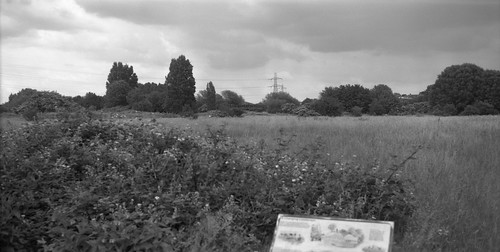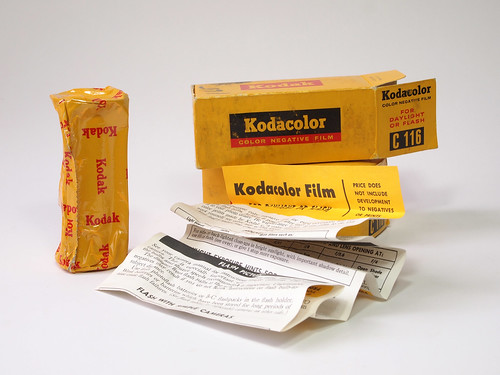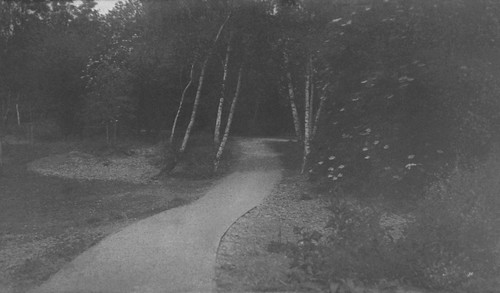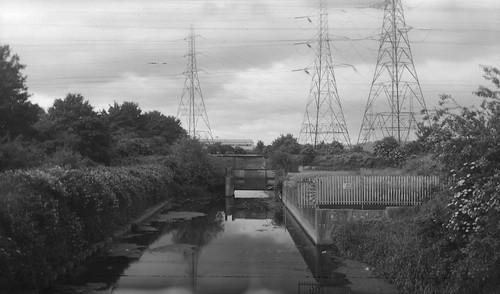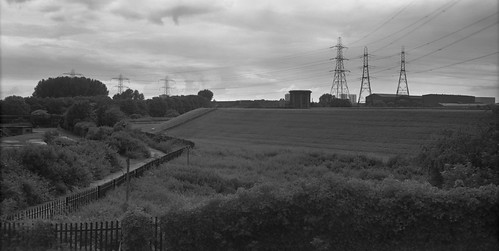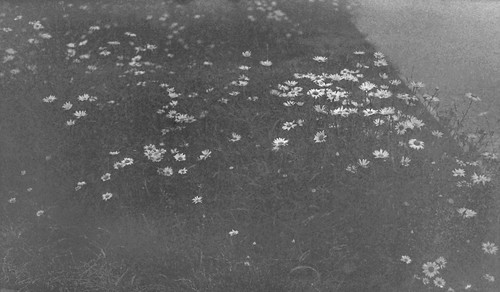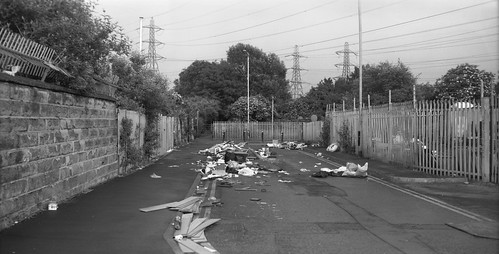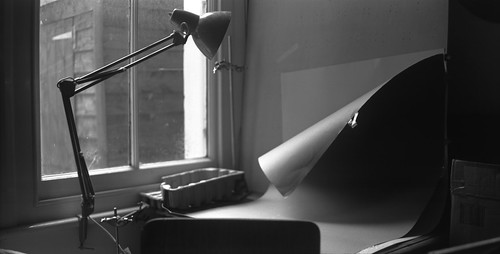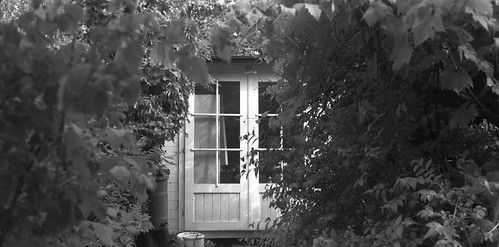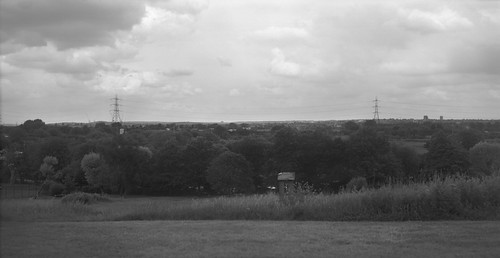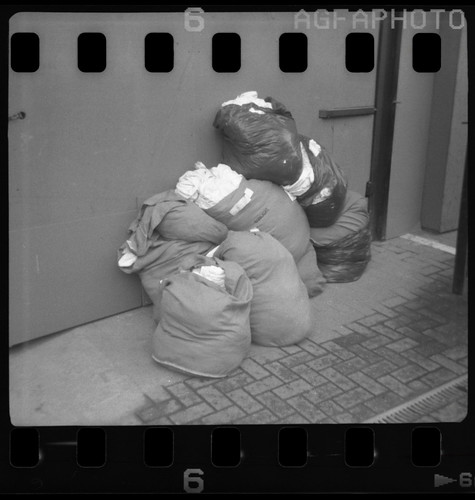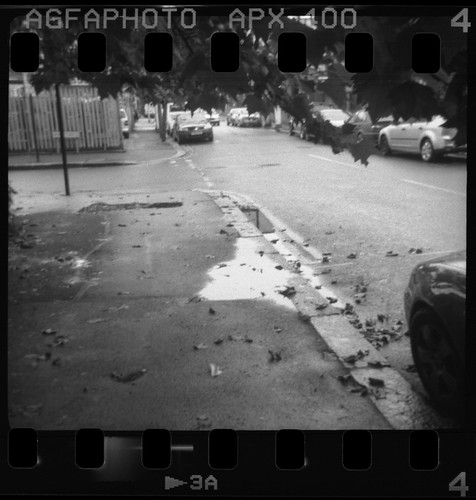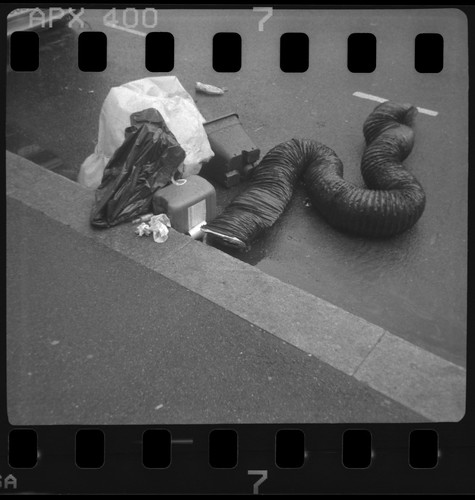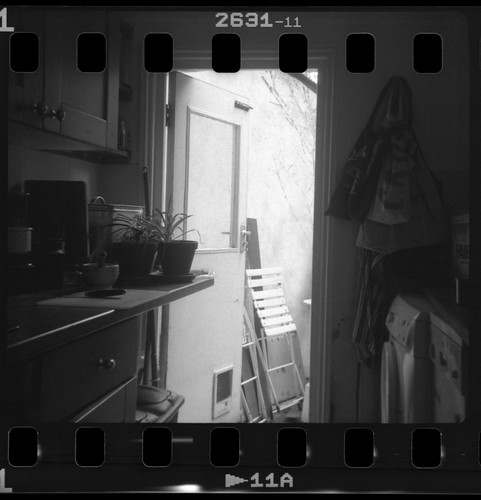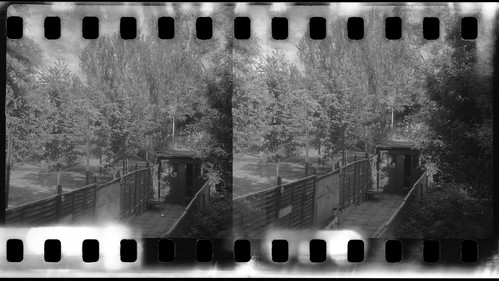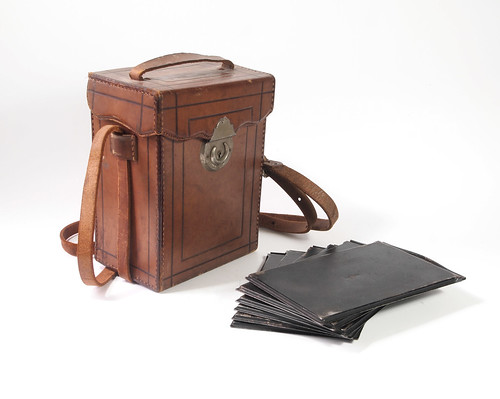 |
| Plate camera box and plateholders |
One of my first posts on this blog was describing what I'd found in the Porte de Vanves flea market in Paris
five years ago; the weekend before last I revisited this flea market on my way through Paris to the south. There were a few cameras of interest to me, but none without one problem or another. However, I did find a stall which had a couple of plate camera boxes containing plate holders. These were 9x12cm-size plate holders, which, having a few cameras in the size, such as the
Ica Trona and the
Kodak Recomar, it's always useful to have more. The stallholder wanted €25 for six holders; I did try to barter down to €20, but he wouldn't move on the price. I then asked for the box too, and was told the price was €10 for the box alone, but he gave me the box and plate holders for €30. If my French had been better, I'd have asked him how often he sells glass plate holders, as I don't imagine these items sell which any frequency in the flea market. The plate holders are all stamped AP Paris, some with a craquelure finish on the darkslide; none had film sheathes inside, but one did contain a glass plate negative, shown below.
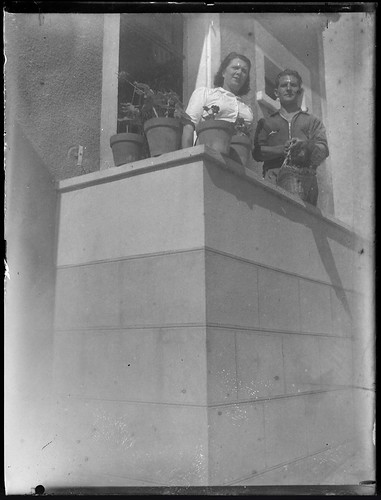 |
| Found glass plate |
A few days later, in Toulouse, a window display of a shop on the Rue Pargaminières drew my attention, with, amongst other secondhand cameras, a
Contax IIIa. The shop was
Photos Signe Des Temps - the website is limited, but the shop itself had a good stock of film, and film cameras, including a whole cabinet of classic SLRs, and a glass case of all kinds of old cameras. One camera which caught my eye was a folding plate camera with a 165mm lens.
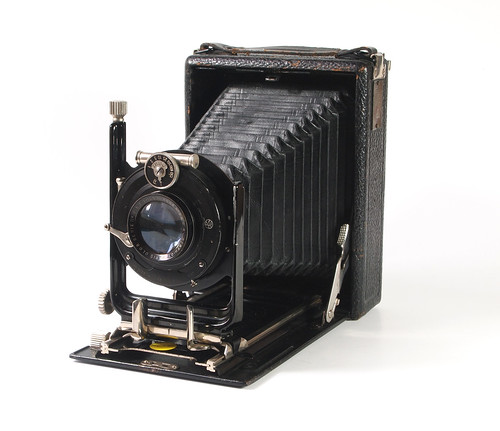 |
| Photo-Plait branded 9x12cm plate camera |
Typically, for a camera of this age, the 165mm focal length would denote a 10x15cm plate size, and at a glance, it looked as though it was larger than a typical 9x12cm camera - which it turned out to be - due to the wooden body. The lens itself was a
Berthiot Olor Series IIa, reputedly a Tessar clone, with a maximum aperture of f5.7 in an Ibso shutter - the eight-speed version with 1/150th, rather than the more common seven-speed shutter, up to 1/100th. The shutter gave some indication of the camera's date: according to Camera-Wiki, the
Ibso was made by Gauthier between 1908-1926. However, I suspect that the lens and shutter unit may not be original to the body, and not simply due to it being an unusual focal length for the negative format. Some of the features are clearly missing, such as the focus scale, and, at infinity, the 165mm lens is drawn out so much that the metal indicator at the base of the lens standard is beyond where the focus scale would need to be in order to read this. It is also missing a wire frame finder, and a brilliant finder: the latter appears as though it may have been carefully sawn away, with the metal cut into a continuation of the curve around the lens standard. As a typical mid-range folding plate camera, it has rise and cross movements, and rack and pinion focus with double extension bellows - a necessity given the focal length. The bellows were in good condition, and the ground glass intact. The lens was dirty but appeared otherwise good, and, by ear, the shutter fired at all speeds fairly close to each setting.
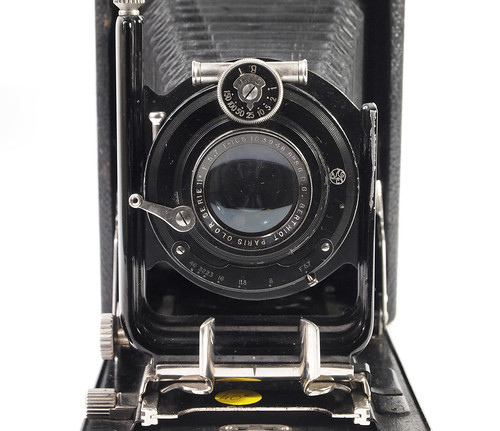 |
| Berthiot Olor Series IIa lens in Ibso shutter |
The camera was priced at €40, and although it did have some missing features, the serendipity of having found the plate holders and camera box in the flea market earlier in the week prompted me to buy it. Needless to say, the plate holders did fit, and the camera itself fitted into the box
with the six plate holders too. Even if the lens and shutter were original, there was little on the body to identify the camera, except for a metal plaque with 'Photo-Plait Paris'. This Paris-based dealer would have affixed this small plaque to the cameras that they sold (including,
in this discussion thread, a Leica), but it appears that some cameras were manufactured for Photo-Plait and sold under their own name. The distinctive thumb-grips on the two locking levers for the base board were some help in getting close to an identification: French cameras are something of a lacuna for me, but after a detailed trawl through
www.collection-appareils.fr, with a different lens, and some removed features, it looks closest to the
Photo-Plait Splendor model.
